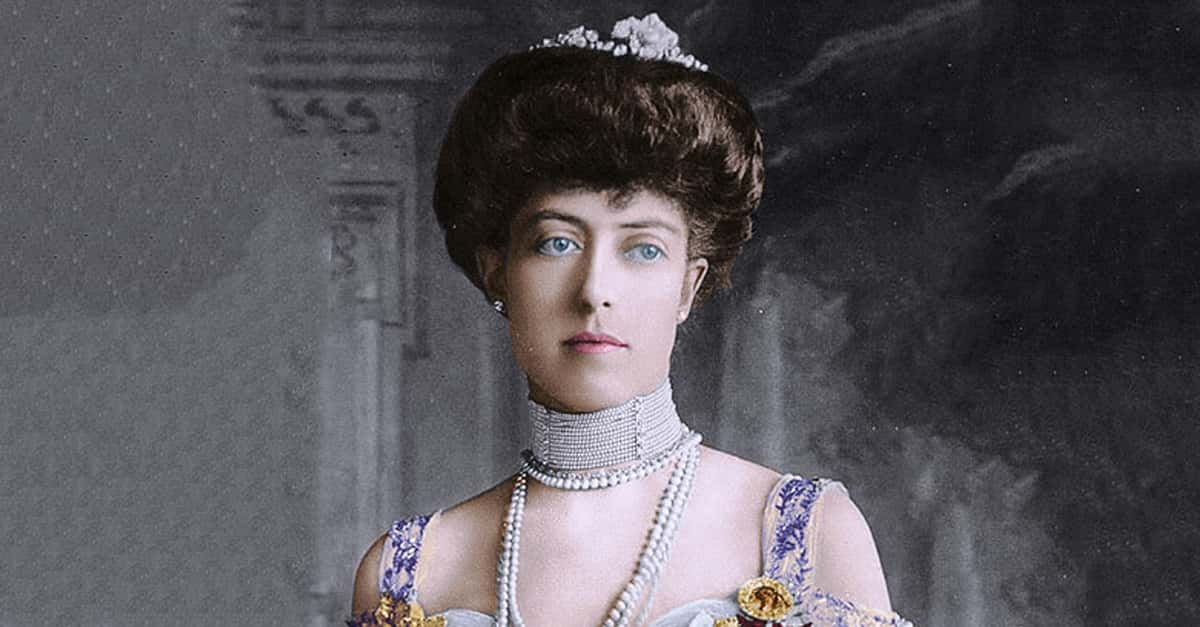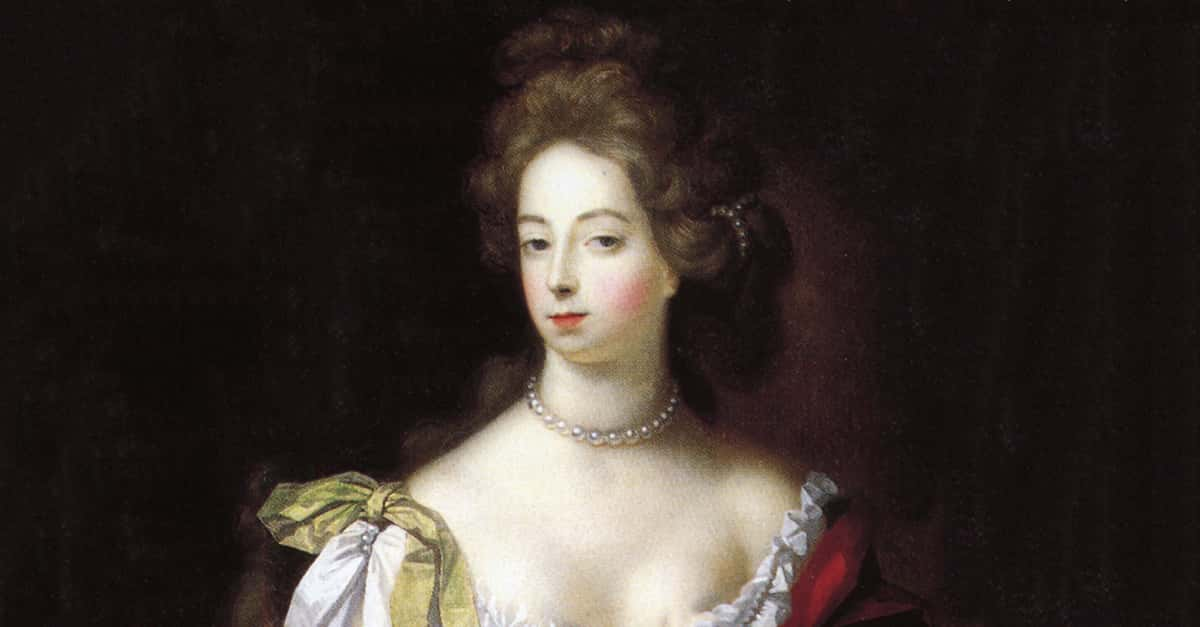Death used to follow closely behind our heels in life. From the bubonic plague to the Spanish flu, all it took was one particularly violent strain of disease to decimate the human population. This is hardly surprising; we had very little defenses. Germs and human anatomy weren’t well understood, if at all, and pathologies that are now easily treatable—like cholera and diabetes—once felled children and adults alike. Death, in short, was everywhere. It could not be contained in sterile hospitals; it spilled over into our homes, our workplaces, and our leisure time.
In the Victorian Age, this familiarity bred the bizarre, and Victorians are infamous today for their love of death photography: the grisly trend where families took pictures with their deceased loved ones. Although modern medical advancements were still lacking in the mid-19th century, visual technology was sweeping ahead—and the daguerreotype, one of the first viable methods of photography, now gave people the macabre ability to document death.
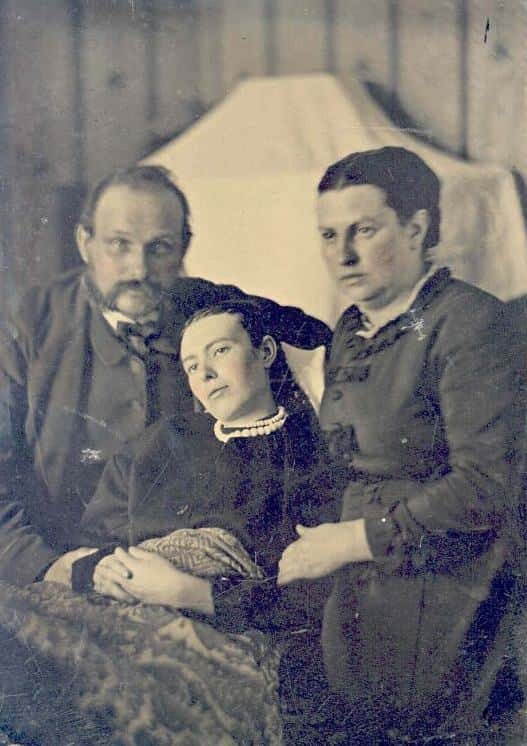 Wikimedia Commons Victorian era post-mortem family portrait of parents with their deceased daughter
Wikimedia Commons Victorian era post-mortem family portrait of parents with their deceased daughter
Perhaps you’ve seen them: those ghostly, sepia-toned photographs of slack-eyed children and odd, sleeping women in musty, outdated clothing, surrounded by flowers and heavy cloth. These are the portraits of death, dark mementos of a deceased loved one painstakingly crafted for family members in the height of their grief. The death photograph, in short, is an instant in time mourning an instant in time.
Except so much about what we think we know about death photography is wrong—or else much more complicated.
All Men Must Die
The daguerreotype, while expensive, was not as prohibitive as portraiture in Victorian England, and soon people began to take up photography as a professional vocation or an amateur past time. These new-fangled photographers took pictures of men, women, and children of various classes, and they were hired to portray their sitters in a variety of settings and poses.
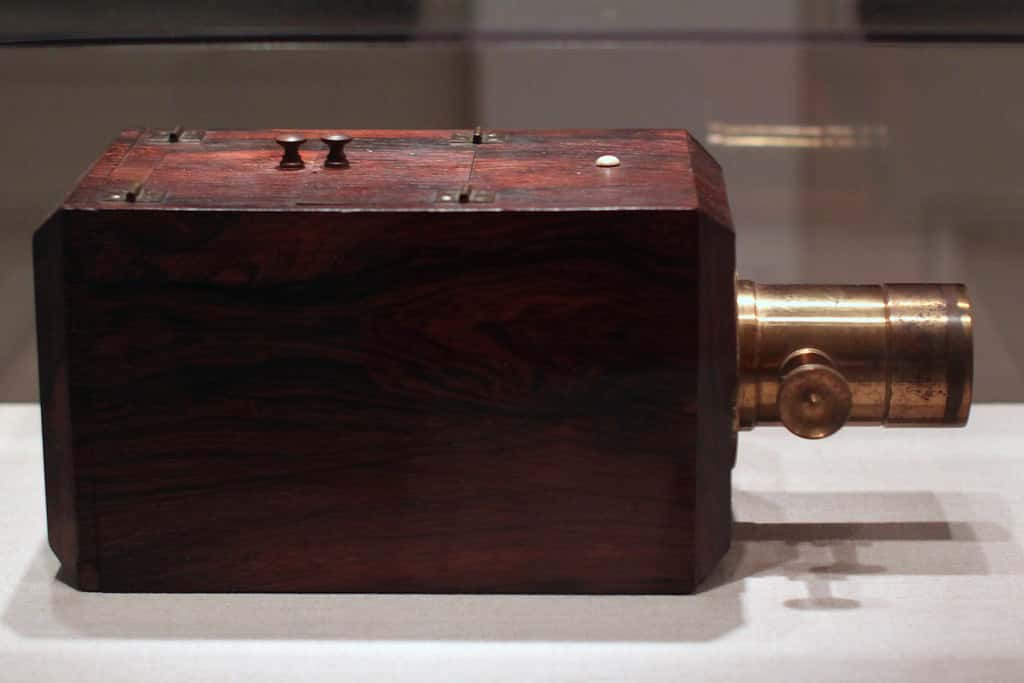 Flickr Daguerrotype camera
Flickr Daguerrotype camera
The trouble was, early cameras required long exposure times. In truth, “long exposure” is a bit of a misnomer, and many settings and cameras required only a second or two of lag time to take a crisp, clear photo. Nonetheless, this is long enough for a subject to move or fidget, thus producing blurry, unusable photos.
Dead people, however, aren’t known to fuss.
Besides, with death so abundant in England, taking one final photograph of a loved one became a relatively common keepsake. This didn’t mean that there was a template for making a death photograph, and they came in all different shapes and sizes. If a child had died, sometimes the mother would pose with the baby, or else hide behind a curtain and prop the body up. Other times, the whole family posed with the deceased.
The state of the body also varied. Some chose to portray their dearly departed in a “last sleep” position, eyes closed and body lax, as if they had just drifted off. This pose reflects the prevalent belief in the similarities between death and sleep, but it was far from the only option in death photography. Other deceased subjects were posed in chairs, akin to attending to their last social engagement. As death photography went on, photographs of bodies in coffins became more popular. Occasionally, photographers would even paint open eyes onto the deceased after developing the picture.
But the next time you come across a death photograph, know this: it might be hiding a dark secret.
It’s Alive!
Many people have noted a strange object in Victorian photography: a small stand propping up the photographic subjects. Some began to argue that this thin, bizarre implement was actually a ghastly clue indicating that the subject in the photo was, in fact, dead. Death photography, the story goes, had progressed so far as to stage the subject as living, using these stands to support the limp weight of the deceased and present their bodies as eerily alive, well, and animated.
Nothing could be further from the truth.
In fact, if you spot one of these stands, it likely means the subject is very much alive. That “long exposure” time required of daguerreotypes meant living subjects usually needed something to prop themselves up against, just to make sure they didn’t move and ruin the picture. As previously noted, dead bodies don’t suffer the same issue. Moreover, these props are very delicate and are thus not able to withstand the dead weight of corpse easily.
Even so, eBay and other modern, online vendors are rampant with fake Victorian death photography claiming to be authentic precisely because of the presence of this stand. Indeed, it’s an alluring myth: what if life and death really did look so similar to the Victorians? What if the boundary between this world and the next was so porous? The truth is, although Victorians played with the idea of death transmuting into another state—whether sleeping, sitting, or wide-eyed—a death photograph generally functioned as a memento, not a delusion.
But this is far from the only misconception about death photography.
Dead Wrong
In actuality, the tradition of death photography goes back much further than the Victorian era, and extends well past England. Before daguerreotypes and the development of photography, “death portraits” were also common, where the deceased was painted, rather than photographed, in a final position.
Even further back than this, death masks were employed either to create a bust of the departed, identify a missing person, or adorn a funeral effigy, among other uses; King Tut himself had a death mask. Moreover, the practice of death photography was taken up in multiple places, including the Americas and Iceland, by a wide variety of people.
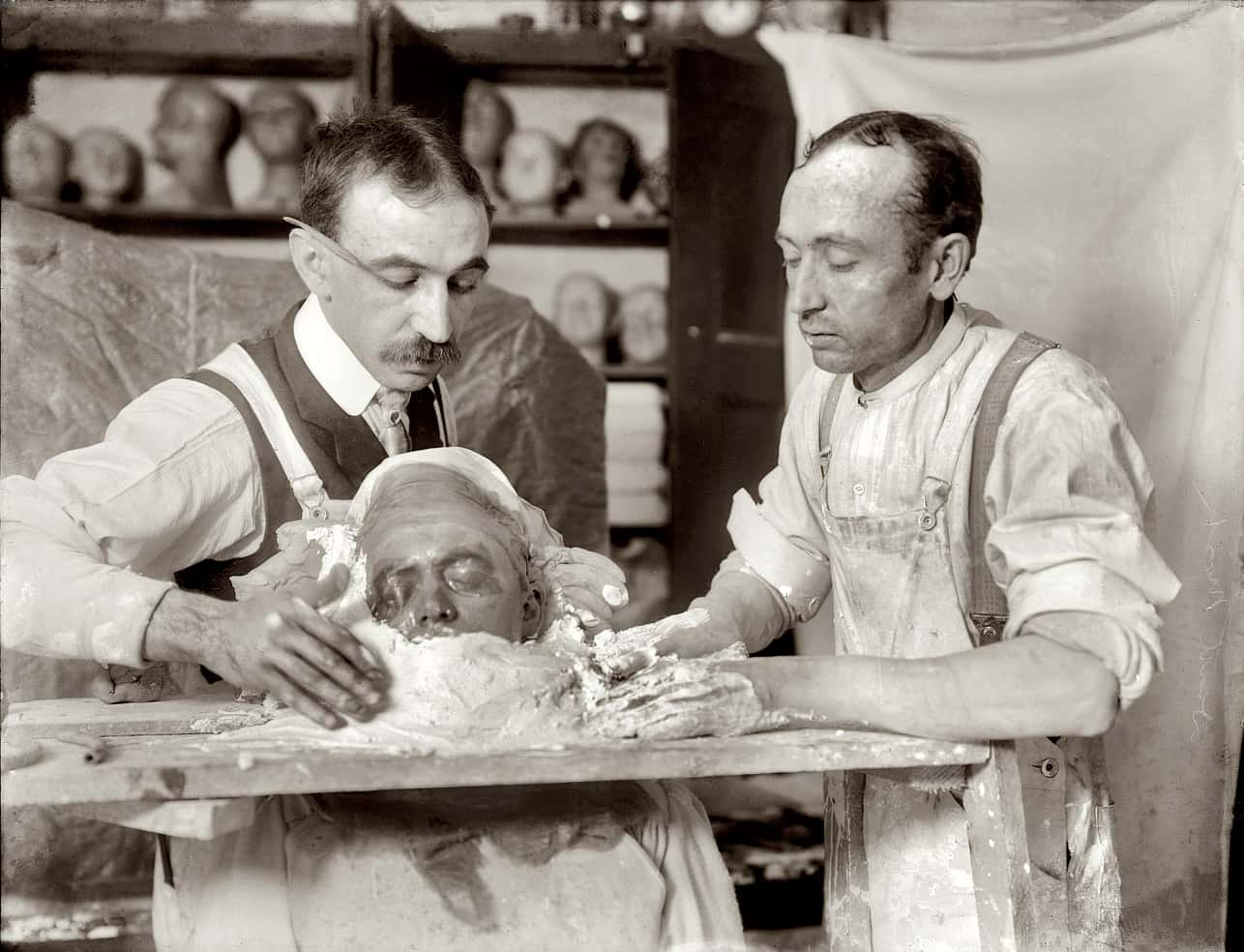 Wikimedia Commons Making a death mask
Wikimedia Commons Making a death mask
Though its popularity has waned in recent years—just as the grip of disease has also abated—death photography is also a contemporary phenomenon. Some influential modern practitioners include James Van Der Zee and his Harlem Book of the Dead in the early 20th-century, and Jeffrey Silverthorne in the 1970s. Just like death, post-mortem photography never really left us. It’s just a little harder to find.
Death Becomes You
Whether they appear in the Victorian age or elsewhere, post-mortem photographs make one thing clear: death is not necessarily the final destination. Our corpses may yet be adorned, loved, grieved, and then documented in one ghostly, eerie snap. So: any last wishes?



